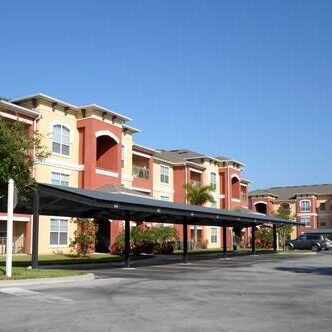As you plan your new or revamped parking lot, one of the first decisions you’ll need to make about its layout is whether to use right angle parking or angled spaces. The choice between these two styles may seem arbitrary, but each has its own pros and cons and each can help your lot achieve different goals. Here’s what you need to know about parking lot stall angle.
Stall Angle Affects Lane Width
Many drivers aren’t aware that parking lots with right angle parking spots also have wider traffic lanes. The first reason for this is that right angle parking can be done from either direction, so lanes tend to be two-way by default. The second reason is that each vehicle must make a wider turn to enter a straight-in parking space than an angle of any degree.
If your parking lot, then, is limited as to how wide it can be, angles are likely the best use of space. And the steeper the angle, the narrower the lanes will need to be. In some cases, you can even use extra space by adding a single-lane parking aisle.
Stall Angle Affects Efficiency
The way drivers have to pull into spaces can also impact how well they park. A right-angle parking space provides the most guidance for drivers in parking in a centered manner because the driver can use the lines on either side as an effective guide. Angled lines are harder to use as guides, so their parking stalls tend to be wider to allow more room for error.
Efficient parking can affect the overall efficiency of your lot in several situations. The primary is when you want to fit as many spaces as possible. To do this, you need drivers to park well because there is less buffer space between parked vehicles. And when your lot is covered with snow or ice part of the time, straight-in parking will help maximize efficiency if drivers can’t see the lines well.
Stall Angle Affects Speed
Many times, the amount of turnover in a parking lot is a big factor in determining whether to use straight-in parking or angles. The reason? It’s simply easier to get quickly into and out of angled stalls. Fewer cars will need to back out and attempt to park again, so they’ll get out of the way sooner.
If your business sees drivers coming for short periods and leaving quickly, angled spaces may help keep things flowing. On the other hand, longer term parking — such as employee lots or apartment complexes — probably doesn’t need to worry about turnover much.
Stall Angle Affects Safety
Finally, consider how different choices can affect safety in the lot. After all, parking lots have two big elements: vehicles driving around and pedestrians walking to and from the establishments. If your lot will have a lot of both types coming and going at once, the potential for accidents is heightened.
The big advantage that angled spaces have over straight-in parking is that they restrict traffic to one-way patterns. This reduces conflict points for both drivers and pedestrians and forces cars to wait for one another. Plus, when you only have to worry about vehicles from one direction, you may need fewer dedicated pedestrian lanes and signage to prevent accidents.
Clearly, every parking lot is unique, and you should use angles that fit your exact needs rather than looking for a universal solution to this problem. The best way to find the right mix is to work with an experienced parking lot striping service. Arrow Blacktop & Masonry, Inc., can help. Call today to make an appointment.


